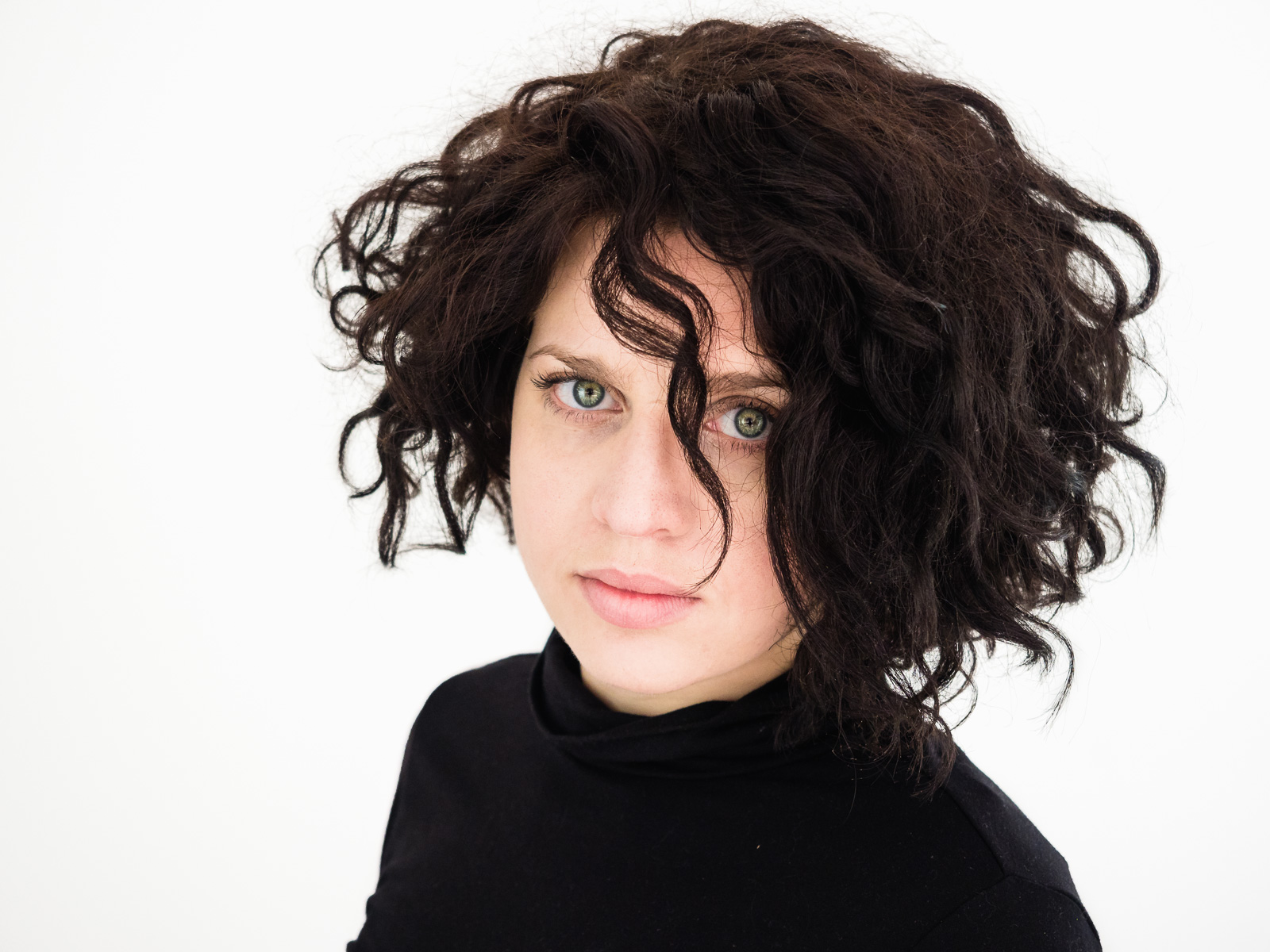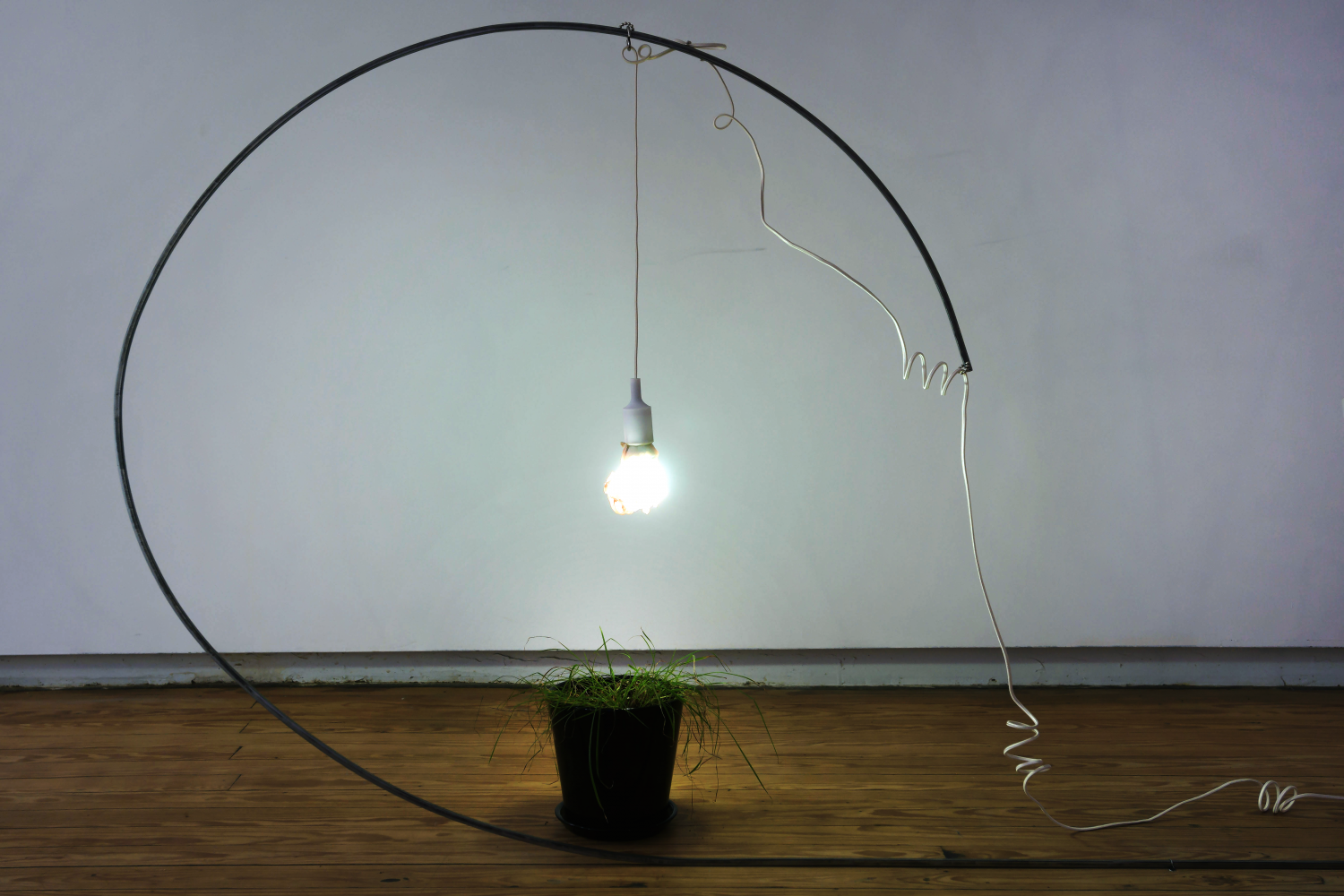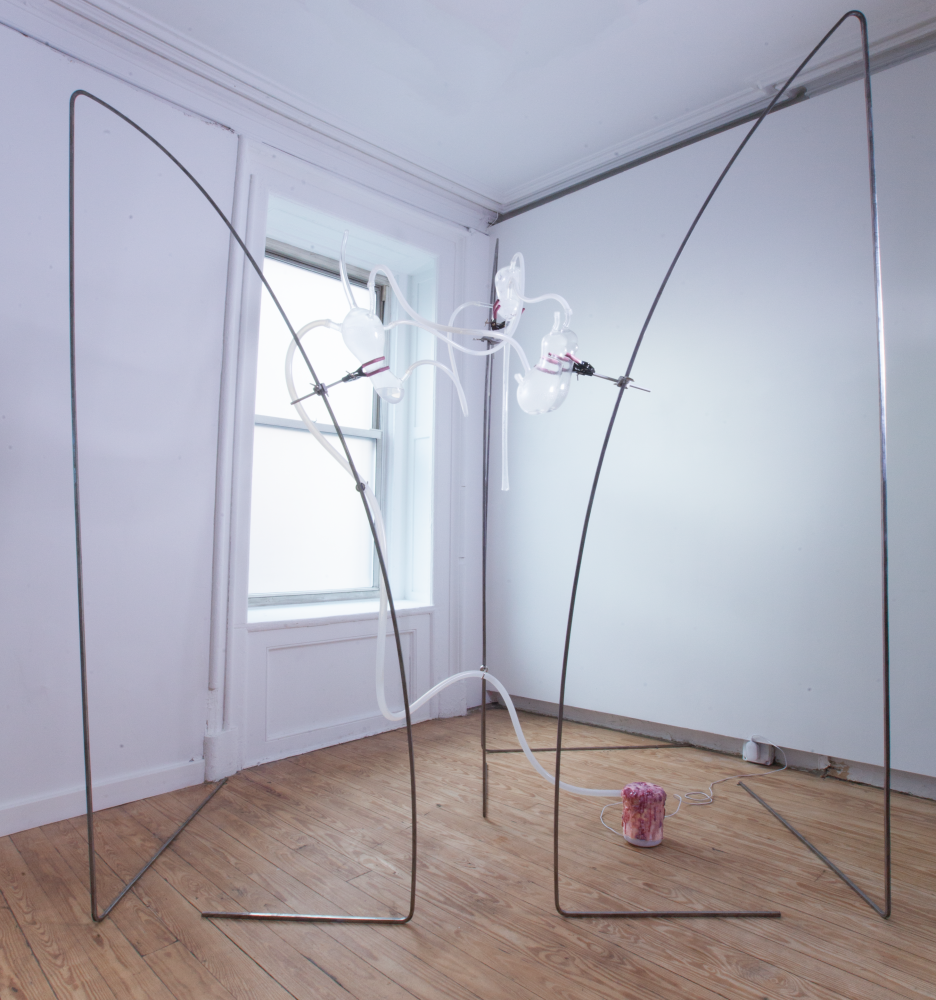Artists
Miriam Simun
Miriam Simun (born in Silicon Valley, United States; lives in Lisbon, Portugal, and New York, United States) is interested in encounters between bodies, human and nonhuman, and techno-ecosystems—ecosystems resulting from cutting-edge technologies and globalized market economies with vast ecological impacts. Simun creates performances, videos, and polysensory installations in which hybridity and assemblage serve as a basis for thinking of a trans-humanist future. Many of her works are articulated around the idea of disruption and the feelings that it provokes, in order to propose new possibilities for living in response to the social, technological, and environmental issues that define the contemporary era.
- Born
- Silicon Valley, United States
- Countries / Nations
- United States / United States + Portugal
- Lives
- Lisbon, Portugal / New York, United States

Works

Miriam Simun, Corporeal Download (Slip), 2017, installation view, Helena Anrather, 2017. Courtesy of the artist

Miriam Simun, Corporeal Download (Sweat), 2017, installation view, Helena Anrather, 2017. Courtesy of the artist
Of the Land
In the installation A Wet Chemical Trace, Simun takes us to a hybrid laboratory-garden in which science and fiction dovetail to give life to strange plants. Spaced around the gallery are metallic structures from which tubes made of silicone hang limply, connecting glass phials that give off humid vapours. The half-organic, half-industrial scaffoldings are punctuated, here and there, with incandescent bulbs. Watered drop by drop by the moisture seeping from these assemblages, plants placed on the floor close the loop of exchanges by emitting oxygen into the space. The result of a three-year project produced in collaboration with botanists, perfumers, chemists, and biologists, Simun’s work traces the post-vegetal trajectory of Agalinis acuta, an almost-extinct flower, the scent of wich is imperceptible to the human species. With the assistance of the company International Flavors & Fragrances Inc., Simun captured the essences of the flower in the form of chemical data so that a synthetic version detectable by the human nose could be produced. Once inserted into the water of the phials, the aromatized olfactory particles are pushed into the tubes by humidifiers and then propelled into the air, ultimately penetrating visitors’ respiratory systems. Echoing this contamination of the body by the flower, the anthropomorphic and technological elements that form the aesthetic of A Wet Chemical Trace highlight the undeniable porosity among human beings, plants, and science—and, more broadly, between nature and culture.